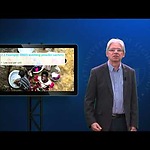An important aspect of frugal innovations, aimed as they are towards the BoP population, is their potential to increase these people's involvement in economic development. In this lecture, Prof. André Leliveld will discuss this point: frugal innovation and inclusive development.
To answer the question how frugal innovations can be inclusive, he will first define what inclusive development means, and how frugal innovations relate to both consumers and producers at BoP. To further illustrate these points, he will answer the question if the TAHMO project is an inclusive innovation.
The key point is, just as frugal innovations are not automatically responsible, they are equally not always inclusive.
Suggested readings
We have 3 suggested and in-depth readings:
- Understanding Frugal Innovation in Africa: Schumpeter revisited
by your techers for this week: Cees van Beers, Peter Knorringa & André Leliveld.
Familiar with economic theories? In this article, the authors explore to what extent Schumpeterian economic theories could improve our understanding of the role and relevance of frugal innovations for economic transformation in Africa. The authors indicate that these theories provide useful entrances to capture and understand frugal innovation. But at the same time, it is clear that Schumpeterian theories need to be further refined and complemented to become an adequate analytical framework for analyzing frugal innovations in a developing country context.
- Inclusive innovation: an architecture for policy development
by Chataway, J., R. Hanlin and R. Kaplinsky, 2014
This paper is about how inclusive innovation needs to be understood and developed in the context of the innovation cycle (process and product innovation), and about the roles played by the poor as both producers and consumers.
It further charts the growing interest of private sector actors in inclusive innovation. Consideration is also given to the role which growth trajectories play in determining the direction of innovation. We advise you to read the article in section 4.3 first and then compare the conclusions. - Cracking the Next Growth Market
Chironga, M. A. Leke, S. Lund and A. van Wamelen, 2012.
This article is about the emerging African economy. In the 2000s, the African economy finally began to stir. Africa is today the world’s third-fastest growing region, and its collective GDP is equal to Brazil’s and Russia’s. Africans spend nearly $900 billion on goods and services — far more than Indians do. Pent-up consumer demand on the continent is enormous, and so are the opportunities! Consider that African telecom companies have added 316 million subscribers — a number higher than the U.S. population —since year 2000!
And yet, because of political instability and poverty, many companies have reservations about Africa. To help managers assess whether growth will continue there — and if so, where — McKinsey conducted an economic analysis of the continent and studied its consumer markets. The conclusion?
Companies can no longer ignore Africa. But they need to manage risks, develop innovative strategies to deal with gaps in infrastructure and training, and recognize that it isn’t one market. There are seen to be four main types of African economies: diversified, oil exporting, transition, and pre-transition. Each presents a different set of opportunities and challenges, and executives must develop their strategies accordingly.
